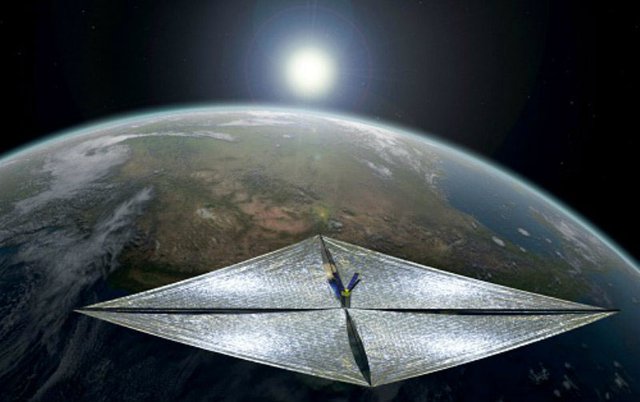RE: One Bit News - Technology - Week 3
Hello,
In the context of the subject of spatial tchnology, I want to speak in this post about The solar sail :
New type of space propulsion: this technology uses the pressure exerted by photons on a large reflecting surface to provide thrust.

The solar sail, or photovoile, is a project dating from 1970. It is a device allowing a spacecraft to be propelled using the radiation pressure emitted by the stars (and not to help of solar winds whose thrust is negligible), as does sailboat, thanks to the wind. This technology has recently been successfully tested in the design of probes, such as IKAROS or Nanosail-D2, launched in 2010. However, some engineers and scientists believe they can apply this technology to interstellar travel.

How does the solar sail work?
The solar sail, besides the use of the gravitational force, is propelled by the radiation pressure emitted by the stars, having for origin the transfer of the impulse of the photons which come to strike its sail. Therefore, the more this sail is large and reflective, the more it returns photons and the greater the propulsion force. By tilting the sail, it is possible to modify the surface offered to the light and thus to regulate the thrust and to direct the craft. However, this thrust is very weak. It would allow for example a sail of 800 m side and 2.5 microns thick to navigate, in our solar system, at a speed ranging from 5 km.s-1 to 25 km.s-1, depending from the distance of the Sun. At such a speed, variable depending on the distance to the star, the solar sail would reach Gliese 581 in nearly 410,000 years.
In the hypothesis that the sail always has the radiation pressure emitted by a star, its thrust, as small as it is, would allow it to move considerable masses, possibly several tons, over long distances. perfectly to interstellar travel.
So some scientists have thought to propel the solar sail using powerful lasers using solar energy, one being placed near the sun (to enjoy its abundant energy), the other placed near the Earth . These lasers would use, in order to focus the beam on the sail, gigantic lenses of 100 km in diameter. They would thus allow the solar sail to reach a speed of 60 000 km.s-1 (0.2 c).
In order to optimize the speed, the solar sail must be as light and thin as possible, while being strong and resistant, because the lower the mass per unit area of the sail, the greater the acceleration experienced (for the total surface area ) is high.